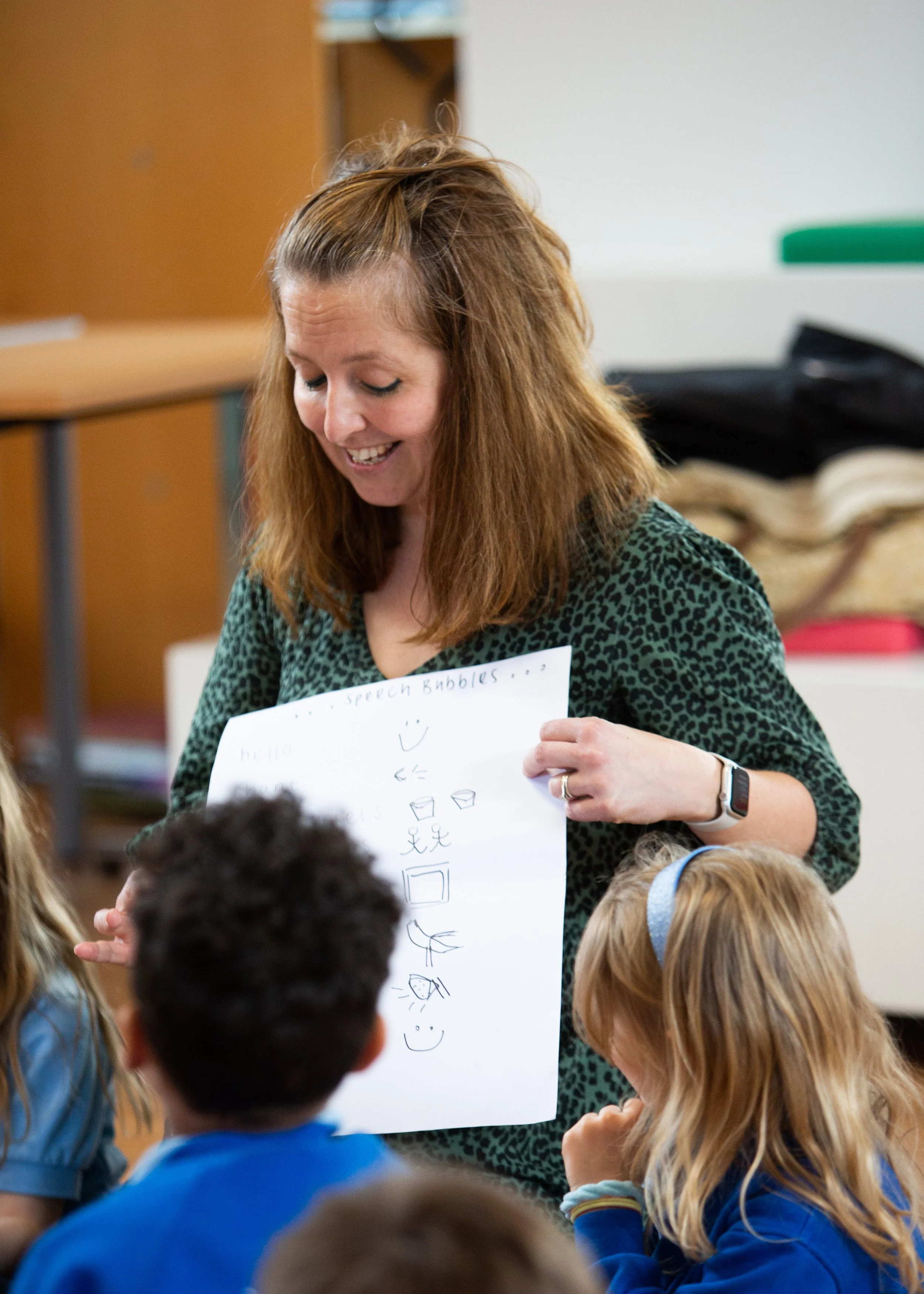Speech Bubbles from a Parents Perspective by Louise Pendry (part one)
Louise Pendry talks about Speech Bubbles from her on personal experience as a mother, leading sessions as a drama practitioner and running Bounce Theatre Company, a Speech Bubbles Partner. She has a unique, insightful and inspiring perspective. This first of her three blogs looks at Speech Bubbles from a parents perspective.
As a mother to a currently pre-verbal, five-year-old child, there are moments in the day where I feel the silence - at the end of school there is no conversation about the day, the things that brought him joy, and the things that might have made him sad. Don’t get me wrong - there is joy. My son has taught me the delight in sharing a gaze, a giggle, and a cuddle. We always leave hand-in-hand, unless he wants to eat his crisps. Yet, I cannot deny there is an absence of knowledge or understanding about how he sees the world he’s living in, when I am not in it. I work hard to see things through his eyes and he has in his own little way, has made me a more empathetic person. I work differently because of him, and I think about the people in my groups more carefully because of him.
Over the last three years, I have sat in various versions of speech and language therapy. I have seen language pyramids and trees on PowerPoints that describe our aspirational journey to language. There have been elements of therapy that have fascinated me. There have also been things that wildly frustrate me - like the attention bucket. An activity where an adult asks a child to sit and tap the bucket. The adult opens it up for them and sometimes with them and they look at a toy. Then they put it back in. Then repeat. In a group session the children were not even allowed to touch the toys. Yet, I regularly receive reports citing how he managed to attend for 2-4 minutes and for a while this seemed to be the sole measure of how we would be judging his success - his ability to sit still when presented with a bucket of toys selected for him by someone he doesn’t really know.
Much later in our journey, I met a Sensory Occupational Therapist who assessed his profile and let me moan about the attention bucket. It turned out he had a low sensory register. He needed movement and exposure to tactile resources in order to wake his body up to engage with the world around him. In many ways, the attention bucket goes against how he best learns and my maternal, instinctive, realisation of this is exactly why I didn't like it. He is judged on his ability to be still and attend, compliant perhaps, without thought to the movement his body needs. We tried a sensory bin. Toys that could have been in a bucket were now hidden in rice.
Suddenly, he could attend for 40 minutes or more, on a daily basis - which naturally gives a much better foundation for building the skills that will lead us towards language.
It also highlights the opportunity for a child’s success to be led by recognising their sensory strengths, rather than predetermined measures set by the adult. My experience with the Occupational Therapist taught me that there are other ways for my son to be visible in this world and be celebrated for his strengths rather than his perceived deficits. When we did this, we were overwhelmed by how quickly his interactions with the world have changed.
I now follow a lot of parents with SEN children on social media. A parent once posted that for her, she felt that inclusion was when you create space for all forms of communication to exist in one space. I couldn’t hit “like” hard enough. As my own experience has taught me the difference it can make. So, how wonderful would it be if we could collectively reorientate our gaze and see a way of living where all forms of communication are valid?


